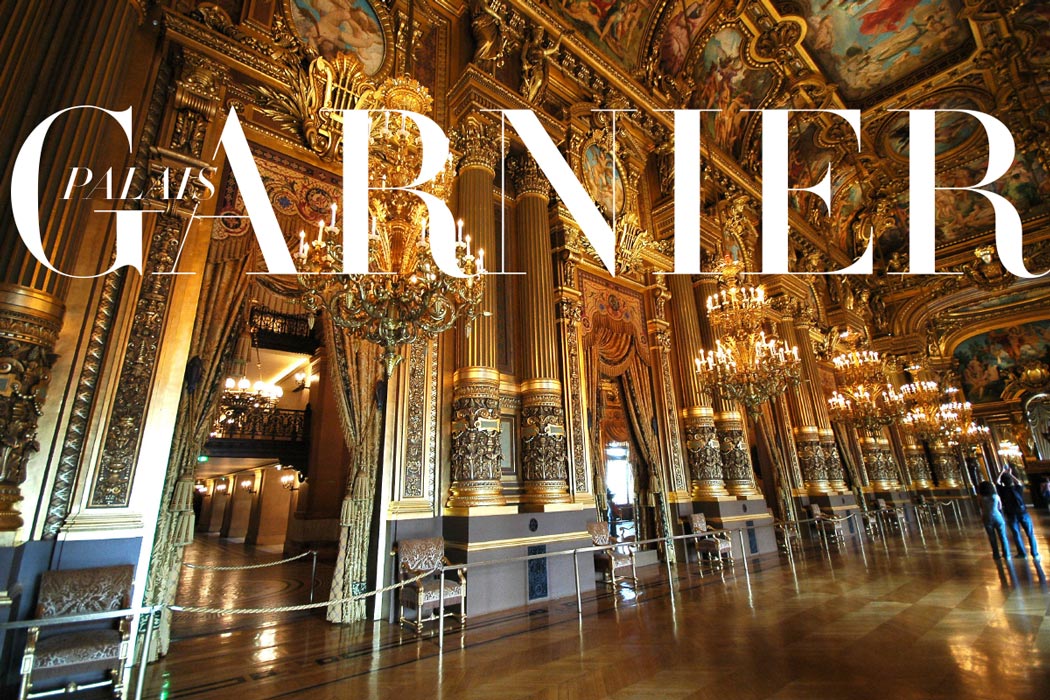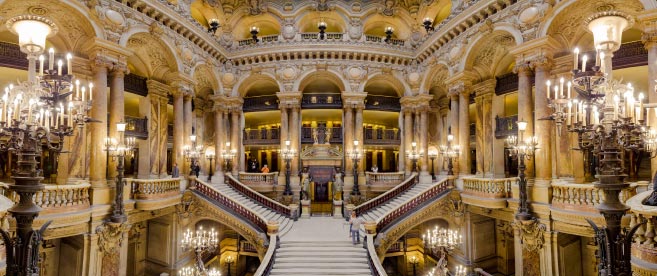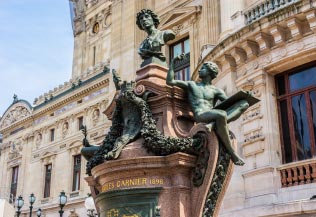
Its metallic structure, hidden by marble, concrete, velvet, and gilding, supports the weight of the 8-ton bronze and crystal chandelier with its 340 lights. The house curtain was created by theatrical painters Auguste Rube (1817-1899) and Philippe Chaperon (1823-1906), following Charles Garnier’s instructions.
The French Historical Opera House
Built by the architect Charles Garnier, the Palais Garnier Opera House is a Historical French monument. Opera Garnier as it is known opened its door in 1875. It is one of the 13th opera houses in Paris.
The opera was initially introduced to Paris by Louis XVI during the year of 1669. Then Emperor Napoleon III commissioned the architect Charles Garnier, to build the Opera House that, later on, was called the Palais Garnier Opera House. It is a Historical French monument. Opera Garnier as it is known opened its door in 1875. It is one of the 13th opera houses in Paris. It is very central and nearby the Louvre.
The opera was introduced to Paris by Louis XVI during the year of 1669. Commissioned by Emperor Napoleon III and built between 1862 and 1875. The beauty of Palais Garnier and its historical monument it is open to visitors, but also the appreciators of the staging opera, ballet and all artistic events in the city of light and love. To visit Palais Garnier is to breathe art. Commissioned by the Minister of Culture André Malraux, Marc Chagall painted 220 m2 of the ceiling inaugurated in 1964, a touch of modernism.
Refinement and Art
The harmony, the refinement, the architecture, the sculptures, the painting, and chandeliers, is the perfect scenario that creates the uniqueness background for the opera and dance.

The luxurious marble and frescoes projected Palais Garnier in the heart of Paris as a “must see” gem. The rooms of Palais Garnier and its elegance is magical. An exceptional monument. This unique building transports its visitors to an era of glamour and charm. Is Paris from the Bélle époque. The atmosphere that permeates this historical palace has the busts of the most famous names of opera’s world. Bach, Beethoven all composers and the mythological figures is a constant reminder of the eternal “Beau Art” of the Belle Époque. The entrance of the Palais is majestic.
The Rotonde des Abonnés and the Bassin de la Pythia leads to the magnificent Grand Escalier. It is the perfect immersion to the most luxurious atmosphere from the past.
To see and to be seen

Inspired by the Italian theatre, the auditorium of Palais Garnier follows the horseshoe-shape where the seats have located the category and audience accordingly.
Its metallic structure, hidden by marble, concrete, velvet, and gilding, supports the weight of the 8-ton bronze and crystal chandelier with its 340 lights. The house curtain was created by theatrical painters Auguste Rube (1817-1899) and Philippe Chaperon (1823-1906), following Charles Garnier’s instructions.
Tapestries, the vault of the Avant-Foyer and its colorful mosaics and gold background, the mirrors and windows provide vast visual dimensions. Featuring the themes of the history of music Paul Baudry between 1828-1886 painted the vault of the Avant-Foyer.
Each of the Salons transports the visitants to a world of luxury and visually empowerment — the shining artistic moment of that time.
The Library conserves three centuries of the history of the theatre and is a must to see. Visitors can assist the audiovisual that recounts the history of Palais Garnier at Galerie of l’Orchestra.
Galerie de l’Orchestre, Grand vestibule, The backstage areas of the Palais Garnier, The Foyer de la dance are all the source of inspiration for many painters and writers, from the past and present. Balzac and Degas were some of the famous artists from a world of luxury, music, painters of Paris: The Bélle Époque.
Once in Paris, pay a visit to Palais Garnier, a monument that breathes the history of a nation.”
